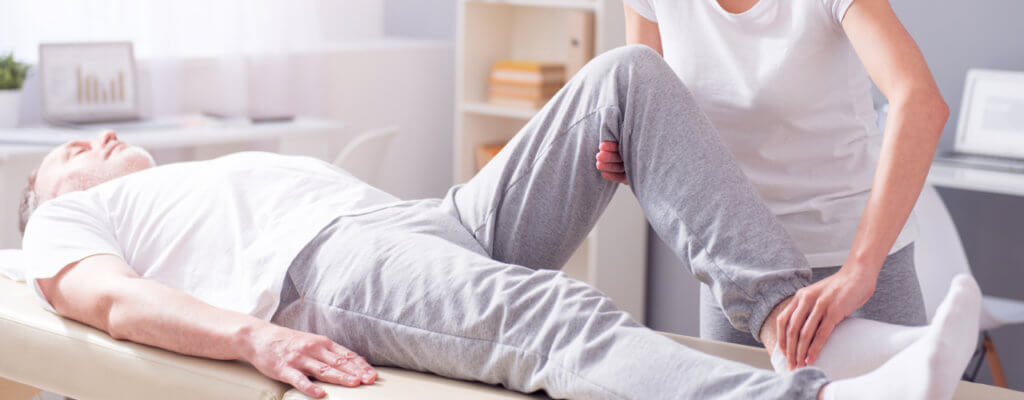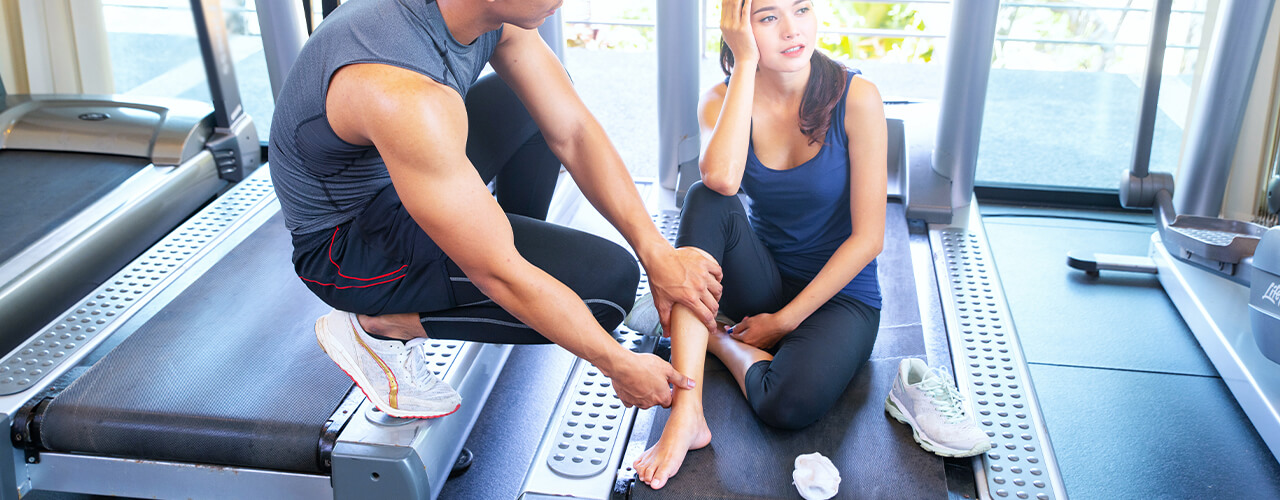Your physical therapist will design a rehabilitation program specifically for your condition. This program can assist you in returning to your desired activities in a safe manner. Some examples of general treatment techniques include:
Patient Education
Your physical therapist will collaborate with you to identify and modify any factors that are causing your pain. They will advise you on the type and amount of exercise you should do, as well as your athletic activities and footwear. They will suggest changes to your daily routine. Your physical therapist will design and teach you a personalized exercise program that will allow you to return to your desired activities as soon as possible.
Pain Management
Your physical therapist will devise a treatment plan for your pain, which will include the application of ice to the affected area. They may also advise modifying some activities that cause pain. Your physical therapist will use and teach you pain-management techniques to help you reduce or eliminate your reliance on medication, including opioids.
Range-of-motion exercise
If your knee’s mobility (movement) is restricted, it can put additional strain on the joint. A lack of movement in your hip, foot, or ankle may also be putting your knee at a disadvantage. Stretching techniques may be taught to you by your physical therapist to help reduce tension and restore normal joint motion. These will concentrate on joints from the pelvis/hip region all the way down to your foot.
Manual Therapy
Hands-on treatments (manual therapy) to gently move your muscles and joints may be used by your physical therapist to treat your condition. These techniques aid in the restoration and enhancement of proper motion. They can also be used to guide your joints into a more relaxed movement pattern. To improve your strength, your physical therapist may apply gentle resistance as you perform certain movements.
Muscle development
Some knee conditions and persistent symptoms can be caused by muscle weakness or imbalance. Your physical therapist will create a safe resistance program for you based on your specific condition. This program will most likely include exercises to strengthen your core (middle) and lower extremities. They might start your program with exercises done while lying down on a table, bed, or the floor. You can then progress to exercises done while standing (e.g., standing squats). Based on your age and physical condition, your physical therapist will determine which exercises are appropriate for you. They may require you to use resistance machines in the clinic and advise you on what equipment you should bring.
Functional Training
Once your pain, strength, and range of motion have improved, you will need to gradually and safely resume more demanding activities. It is critical to learn safe, controlled movements in order to reduce the strain on your knee. Your physical therapist will design a series of activities to help you use and move your body correctly and safely, based on your specific condition and goals.
Braces and other assistive devices
Your physical therapist or other members of your health care team may recommend braces, walking aids, wraps, or tape depending on your condition. These devices may help you recover.
- A cane, walker, or crutches can help relieve pain and improve your walking ability. Your physical therapist may advise you to use these walking aids for a limited time. Alternatively, if you have a specific condition, such as osteoarthritis, you may need to use them for a longer period of time.
- During the initial recovery period, your physical therapist may advise you to wear a brace to help stabilize your knee. They can help you fit the brace and teach you how to use it.
- Wrapping your knee may be advised to reduce swelling. Wrapping techniques will be used by your physical therapist. They may also advise you to wear compression stockings.
Your physical therapist might refer you to an orthopedic doctor who specializes in knee injuries and conditions. They may advise diagnostic imaging (such as an X-ray or MRI). An X-ray can aid in the detection of bone abnormalities (such as osteoarthritis or fractures). An MRI can help confirm the diagnosis of tendon and ligament injuries as well as provide a different perspective on your bones and cartilage.
How Can a Physical Therapist Help Before and After Surgery?
Your physical therapist, in collaboration with your surgeon, will be able to advise you on how much activity you can engage in. The activities you can do will be determined by the type of knee surgery you have (for example, total knee replacement). Your physical therapist and surgeon may also recommend physical therapy prior to surgery to improve your strength and range of motion. Physical therapy before surgery can sometimes aid in post-surgery recovery.
Following surgery, your physical therapist will create a personalized rehabilitation plan for you. They will assist you in regaining the strength, mobility, and endurance required to resume your previous daily activities.
Are You Looking for Relief for Your Hip and Knee Pain?
Pace Physical Therapy in San Jose, California specializes in non-surgical relief and recovery therapies for injuries. Our physical therapists in San Jose, CA are movement professionals who can help you heal easily and accomplish your physical goals. Do your knees feel sore, or do they feel as if, without warning, they could buckle under you? Do sharp hip pains find it hard to get up in the morning, walk about during the day, and lay down at night? Hip joint pain and knee pain, especially if you’re dealing with both, can seriously interfere with your life. Whatever could be uncomfortable for you, physical therapy may help you get safely and easily to the source of your problem without the need for harmful drugs or surgery. To alleviate your hip and knee pain entirely, make an appointment with Pace Physical Therapy in San Jose, CA, saving you the need for potentially harmful medicine or surgical correction. We strive every day to provide excellent service for all our patients because we understand it can be frustrating not being able to do what you love most due to an injury keeping us off the field or court! Contact us today to schedule your appointment!



